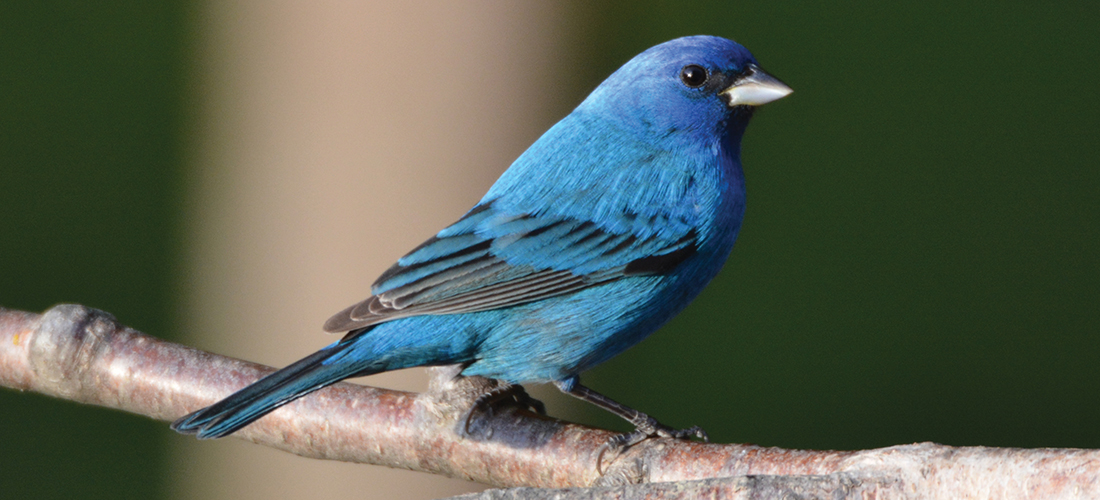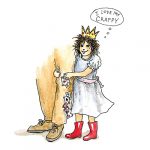
Bird on a Wire
Meet “the other bluebird,” the indigo bunting
By Susan Campbell
“What, what? See it, see it! Here, here!!” Where? It’s a bird: high up on a power line singing incessantly, day-after-day during the summer months. This one can only be a male indigo bunting, loudly advertising his territory. He will continue to call out his challenge to everyone and anyone who will listen. His two-syllable, repeated vocalization is unmistakable.
To some, this fella is the “other” bluebird, slimmer but blue all over. Indigo buntings are an iridescent, darker blue than the familiar Eastern bluebird. And, as with all blue birds, their feathers are actually brown. The color we see is not due to actual blue pigmentation but from specialized microscopic structures that reflect and refract in the blue wavelength. And, as with other buntings, this bird has a strong, conical bill, capable of cracking hard-shelled seeds.
Female indigo buntings, however, are camouflaged; equipped with dull feathers that blend in with the habitat. They appear to be mostly brown with a pale throat, a lightly streaked breast and some hints of blue on the back. During the winter, males molt into drab plumage: not unlike our goldfinches. Immature males are often blotchy blue and brown their first spring and, as a result, will not likely breed. But when they don their breeding plumage they are a sight to behold and unmistakable.
Indigo buntings are found in a variety of habitats throughout the Piedmont and Sandhills. They tend to favor forest edges. But you can also look for them in brushy fields or clearings where weedy seed plants and insects are abundant. Associated dense woody growth provides good nesting substrate. Buntings may even be lured to where they prefer small oily seeds such as thistle (nyger). However, these birds have a broad, opportunistic diet. In early spring when seeds and insects are in short supply, they turn to buds, flowers and even young leaves. Indigo buntings eat mainly insects in the summer, not only feasting on a variety of caterpillars but large, hard-bodied beetles, grasshoppers and cicadas.
It should, then, come as no surprise that this species will disappear from areas where scrubby borders have been cut and grass is regularly mowed. “Tidying up” of our subdivisions and parks displaces indigo buntings as well as other migrant songbirds that require low cover. This is one reason why it is important to maintain as much green space in native vegetation as possible in our communities.
But indigo buntings do not stick around all year — as fall approaches, these little bits of the sky will flock up and head south to Central America and the Caribbean. They will fly great distances at night, using the stars to guide them. In fact, indigo buntings were the subjects of early migration research in the 1960s. But, come the following April, they will be back in their favorite haunts, singing their familiar song once again. PS
Susan would love to hear from you. Feel free to send questions or wildlife observations to susan@ncaves.com





